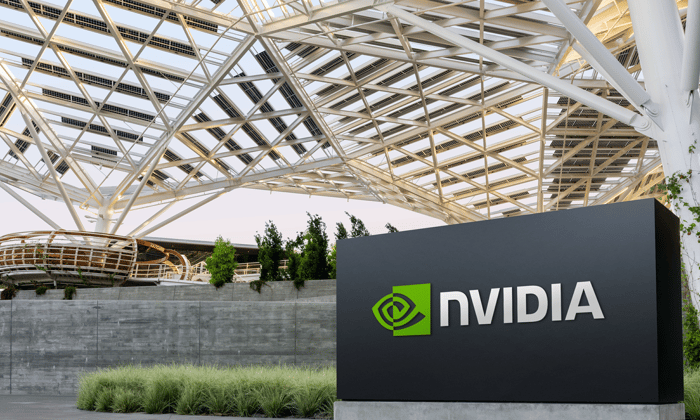|
|
|

|
|||||

|
|
Nvidia Quantum Cloud has already gained widespread adoption with quantum computing developers.
The company recently introduced NVQLink to connect quantum and classical computers.
Nvidia is following a familiar pick-and-shovel strategy with quantum computing that has worked very well with AI.
Back in California's gold rush in the mid-1800s, thousands of individuals flocked to the region hoping to find gold and strike it rich. However, the easy money was instead made by the suppliers who sold tools to the gold prospectors.
Today, the term "pick-and-shovel investing" honors that legacy. Oftentimes, providers of ancillary products and services achieve greater success than pure-play companies do.
Where to invest $1,000 right now? Our analyst team just revealed what they believe are the 10 best stocks to buy right now, when you join Stock Advisor. See the stocks »
Could this be the case with Nvidia (NASDAQ: NVDA) in the quantum computing market? Maybe so.

Image source: Nvidia.
Several companies are racing to develop large-scale quantum computers that can be utilized in a wide range of practical applications. They include tech giants such as Google Quantum AI parent Alphabet (NASDAQ: GOOG) (NASDAQ: GOOGL), Amazon (NASDAQ: AMZN), and Microsoft (NASDAQ: MSFT) as well as rising stars like D-Wave Quantum (NYSE: QBTS) and IonQ (NYSE: IONQ). However, Nvidia isn't in this group.
That doesn't mean that Nvidia doesn't have a vested interest in quantum computing, though. And the chipmaker doesn't have to wait for quantum computing to fulfill its potential to make money, either.
Researchers must develop simulations of quantum systems to design and test algorithms and circuits. However, access to quantum processing units (QPUs) today is limited and expensive. Nvidia recognized this challenge and offers a solution: Use its graphics processing units (GPUs) on classical computers for quantum simulation.
Nvidia Quantum Cloud supports quantum simulation using the company's GPUs and its CUDA-Q quantum computing platform. Roughly 75% of organizations deploying QPUs use CUDA-Q.
Three of the four largest cloud service providers have integrated Nvidia Quantum Cloud into their platforms: Microsoft Azure, Google Cloud, and Oracle (NYSE: ORCL) Cloud Infrastructure. The notable exception is Amazon Web Services (AWS). However, AWS allows QPU developers to use Nvidia's CUDA-Q.
Nvidia's quantum opportunities aren't limited to simulation. The likelihood is that most practical quantum computers will be hybrid systems that connect QPUs with classical supercomputers for the foreseeable future.
The problem is that qubits (the basic units of information in quantum computers) are notoriously unwieldy, at least for now. Because they're prone to errors, complex calibration processes and control algorithms are required to keep them on track. Nvidia is addressing this challenge in two ways.
First, the company's GPUs are ideally suited for powering the supercomputers needed in hybrid quantum-classical systems. Second, Nvidia has developed a low-latency, high-throughput bridge between QPUs and its GPUs called NVQLink.
Nvidia found and CEO Jensen Huang describes NVQLink as "the Rosetta Stone connecting quantum and classical supercomputers." He recently predicted, "In the near future, every Nvidia GPU scientific supercomputer will be hybrid, tightly coupled with quantum processors to expand what is possible with computing."
Making money as a pick-and-shovel play in quantum computing should be relatively straightforward for Nvidia. The company has successfully navigated a similar path in artificial intelligence (AI).
OpenAI, Google, and others have developed powerful large language models (LLMs). Many of these companies are also pioneering agentic AI and working on artificial general intelligence (AGI) and AI superintelligence (ASI). Nvidia opted not to compete on their turf. Instead, it's supporting them with the chips and software tools that make their jobs easier.
In many respects, Nvidia's strategy in quantum computing mirrors the approach it has taken with AI. With the company generating revenue of $57 billion in the third quarter of 2025 and projecting revenue of $65 billion next quarter, Nvidia's AI strategy is paying off handsomely. I think supplying the picks and shovels for the quantum computing gold rush will prove to be a winning approach over the long run, too.
Before you buy stock in Nvidia, consider this:
The Motley Fool Stock Advisor analyst team just identified what they believe are the 10 best stocks for investors to buy now… and Nvidia wasn’t one of them. The 10 stocks that made the cut could produce monster returns in the coming years.
Consider when Netflix made this list on December 17, 2004... if you invested $1,000 at the time of our recommendation, you’d have $562,536!* Or when Nvidia made this list on April 15, 2005... if you invested $1,000 at the time of our recommendation, you’d have $1,096,510!*
Now, it’s worth noting Stock Advisor’s total average return is 981% — a market-crushing outperformance compared to 187% for the S&P 500. Don’t miss out on the latest top 10 list, available when you join Stock Advisor.
*Stock Advisor returns as of November 17, 2025
Keith Speights has positions in Alphabet, Amazon, and Microsoft. The Motley Fool has positions in and recommends Alphabet, Amazon, IonQ, Microsoft, Nvidia, and Oracle. The Motley Fool recommends the following options: long January 2026 $395 calls on Microsoft and short January 2026 $405 calls on Microsoft. The Motley Fool has a disclosure policy.
| 1 hour | |
| 1 hour | |
| 1 hour | |
| 1 hour | |
| 2 hours | |
| 4 hours | |
| 5 hours | |
| 6 hours | |
| 7 hours | |
| 10 hours | |
| Dec-13 | |
| Dec-13 | |
| Dec-13 | |
| Dec-13 | |
| Dec-13 |
Join thousands of traders who make more informed decisions with our premium features. Real-time quotes, advanced visualizations, backtesting, and much more.
Learn more about FINVIZ*Elite